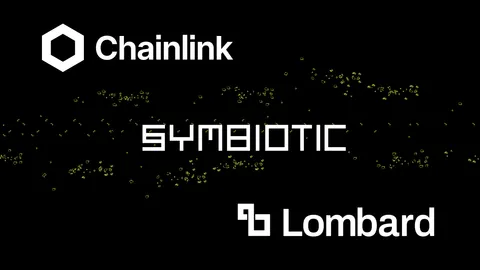Symbiotic is a modular, permissionless staking framework designed to enable flexible and programmable economic coordination for onchain applications. Rather than functioning as a shared security protocol in the traditional sense, Symbiotic provides a generalized infrastructure where any protocol can create its own staking market with custom logic, roles, collateral types, and slashing conditions. This enables Universal Staking, a more flexible model that allows protocols to evolve their security and incentive mechanisms over time.
The three core participants - Stakers, Networks, and Operators - are connected through a sophisticated infrastructure layer. At the heart of these connections are Vaults, which serve as the primary interface between all participants.
Symbiotic coordinates and manages interactions in this ecosystem by:
- Enabling Stakers to deposit their assets into Vaults, where Curators manage delegation strategies and approve qualified Operators
- Facilitating Networks' access to security by connecting them with Vaults and their associated stake
- Allowing Operators to receive stake allocations through Curator-managed Vaults to perform their network duties
This interconnected system is monitored by Resolvers, who validate activities and ensure security across all connections. In the following sections, we’ll explore how Vaults function in more detail and why they are crucial to any staking framework.
Universal Staking Vaults: Overview
Vaults serve as the delegation and staking management layer of Symbiotic. They are configurable and can either be deployed immutably with predefined settings or set up with an owner authorized to modify parameters. This flexibility makes them suitable for operators and curators, such as crypto institutions or liquid (re)staking protocols, looking to build differentiated products. Vault contracts are composed of three core modules, each responsible for a distinct function within the Symbiotic economy:
Stake Accounting
The Accounting Module is responsible for handling the financial aspects of the vault, including processing deposits from users and keeping track of balances, managing withdrawal requests and claims, and implementing epoch-based accounting for slashing.
- Stakers deposit their assets into vaults
- Each vault is managed by a curator who controls stake allocation
- Curators delegate stake to qualified operators who run network infrastructure
- A single vault can serve multiple networks simultaneously, allowing efficient stake distribution across different operators
The stake delegation system has several important characteristics. Assets remain securely locked in the vaults without requiring any actual transfer, and delegation operates purely through an internal accounting mechanism. Assets can only exit the vault under two conditions: either through withdrawals by the original staker or as a result of validated slashing events triggered by the networks.
Delegation Strategies
The Delegator Module is responsible for handling the vault's funds allocation across networks and operators.
Symbiotic’s flexible architecture allows networks to interact with multiple vaults simultaneously, enabling them to aggregate security from diverse sources. Operators can accumulate stake across these different vaults, while networks calculate total stake by aggregating delegations from all relevant vaults.
At the center of this coordination is the Delegator, which manages how a vault’s funds are allocated across networks and operators. It facilitates stake gating, allowing networks to set limits on how much stake they’re willing to accept, processes curators’ stake distribution actions and provides historical data on stake allocations at any point in time.
The Delegator utilizes information from the Vault regarding deposited funds. This data is crucial for determining accurate stake limits and ensuring that the slashing process aligns with the current state of the vault.
Slashing Processing
The Slashing Module handles penalty enforcement.
- Networks can initiate the slashing of operators by interacting with vaults where operators have a stake
- Networks can choose which vaults to slash from if an operator has a stake in multiple vaults
- Resolvers act as validators of slashing events with veto power
Resolvers can be automated contracts, slashing committees, dispute resolution frameworks, multisig wallets, or DAO governance systems. Networks and vault curators agree on which resolvers to use (or not to use any resolver at all) and slashing terms. During slashing, networks choose vaults to slash from, resolvers review the event and can veto invalid slashing attempts.
When a slashing event is triggered, the Slasher module queries the Delegator module to obtain a stake allocation for an operator and a network in question. This information is used to validate that the proposed slashing amount does not exceed the allocated stake. Then, the Slasher interacts with the Vault to proceed with the burning or redistribution of the slashed funds.
For more on how Resolvers work, check out our Resolvers Blog Article.
Looking Forward
The launch of Symbiotic vaults marks a crucial step toward efficient shared security coordination. While initial implementations focus on core functionality, the modular design enables future expansion into more sophisticated delegation strategies and security mechanisms. Support for assets from other blockchains becomes possible through collateral abstraction, further broadening participation options.
For technical specifications about vault mechanics, restaking configurations, and security models, visit our documentation. To explore our growing ecosystem of vault providers or learn more about integration possibilities, reach out to us here.



















